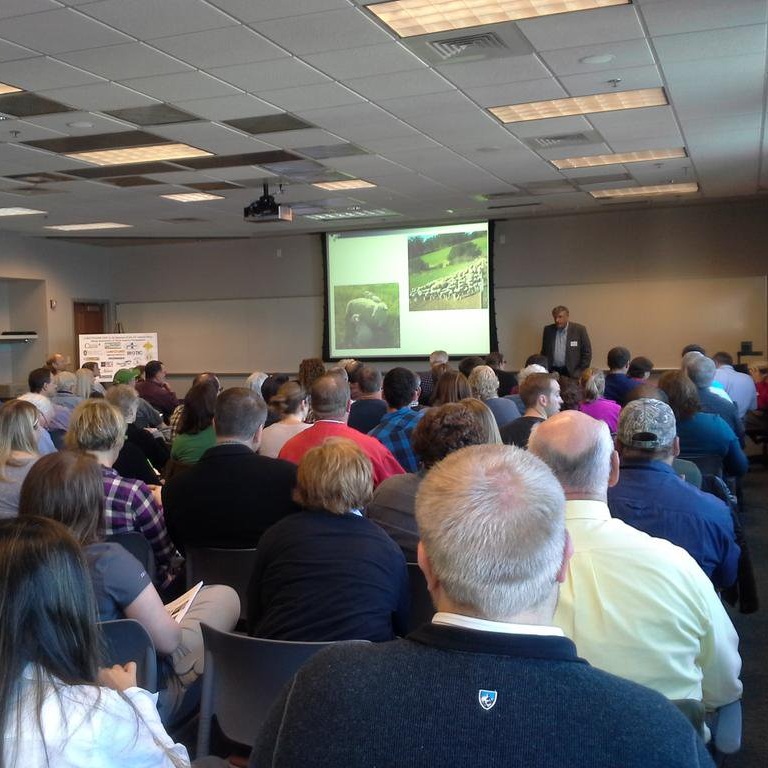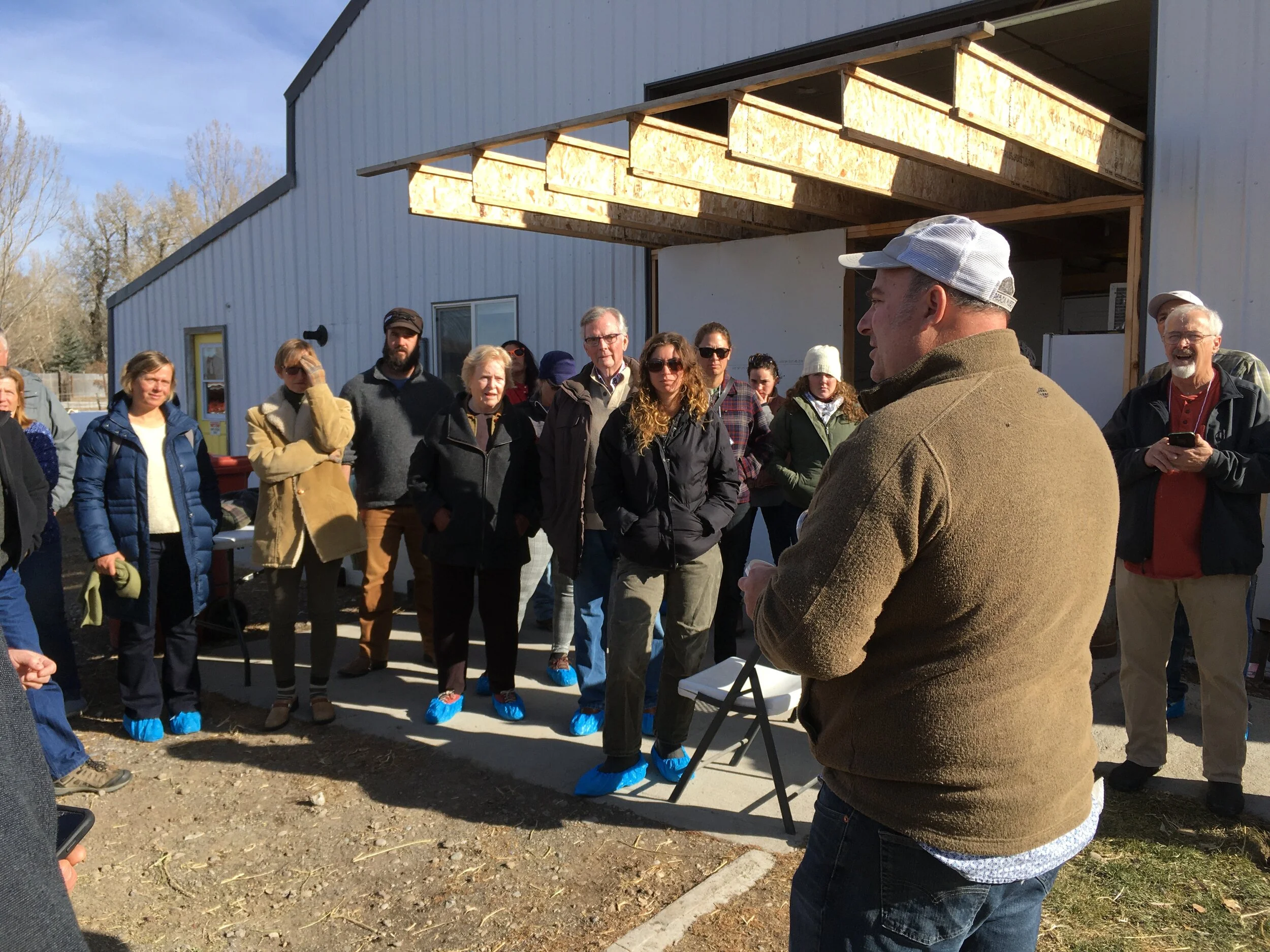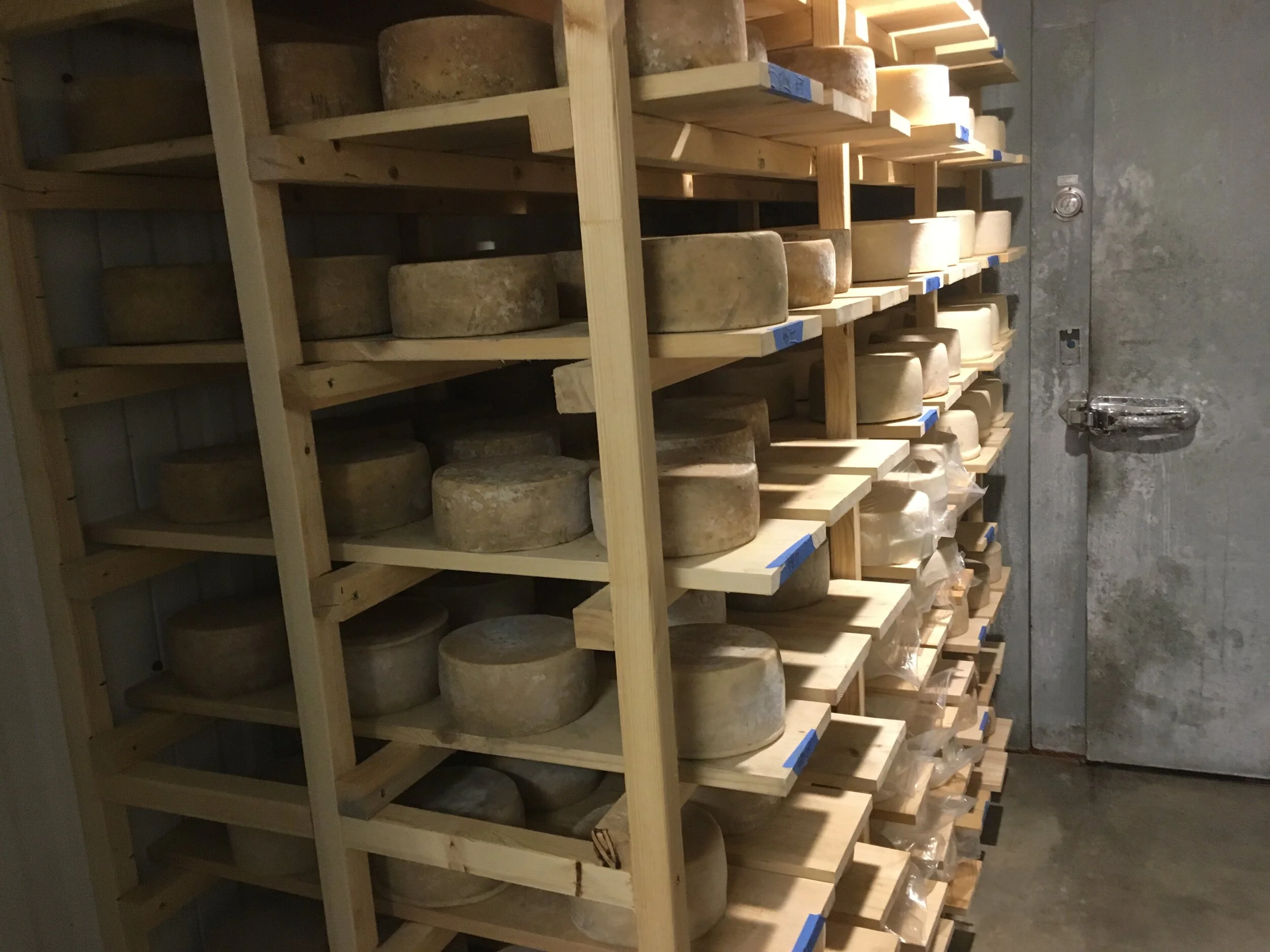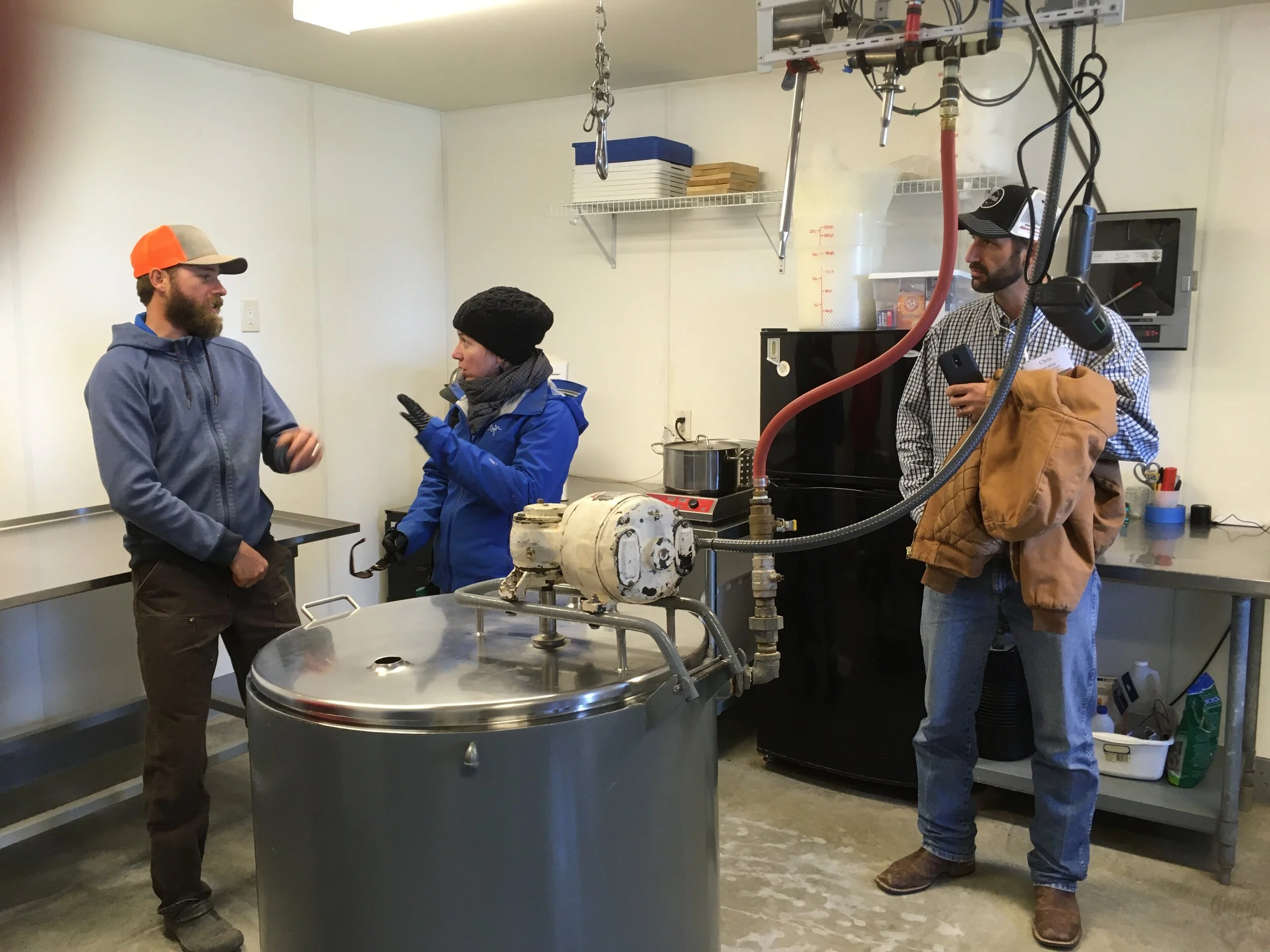The cheesemaker - milk producer relationship
The relationship between cheesemaker and sheep-milk producer is so so so important. When it is positive and constructive, both sides benefit – great cheese with great yields on one side, and a steady source of income on the other side. To make this relationship enduring and stable, each side’s needs and expectations have to be very clear. At this year’s Symposium, two cheesemakers who purchase milk from multiple farms will talk about how they create positive and dependable relationships with their milk suppliers. They will discuss their contracts with their milk suppliers and how their agreements have evolved over the years; their testing/analysis processes and milk quality requirements or limits; how they calculate milk payments; and what challenges they have faced in purchasing milk. Photo: milk test day at Jean-Paul Houde’s farm in Quebec.
Setting the price of your sheep-milk cheeses
Pricing artisan cheese is somewhere between an art and a science. Three producer-processors, representing markets on both the East and the West Coasts of the US, will discuss the processes they use to price their cheeses for the wholesale marketplace and the direct-to-consumer marketplace. They will answer questions such as “Do you have a formula that includes costs and margins, or do you base it on the prices of other cheeses in the marketplace?”; “How do you factor in additional costs such as shrinkage, samples, demos, promotions and shipping costs into your pricing?”; “How much room for negotiation do you have with your distributors?”; and – this is a really interesting one – “Have you incorporated any business advice from others, about how price your products?”. We always learn so much from our friends who are in the same business, with similar niche products, facing similar tight margins! Photo thanks to Glendale Shepherd, Whidbey Island, Washington.
Testing for fat and protein in our dairy sheep
We know that generally speaking in dairy animals, milk yield and component percentage are inversely proportional: higher-producing ewes (and ewe breeds) tend to produce a lower percentage of milk fat and protein. The same holds true in dairy cattle. But what if you could identify those special ewes that both have higher milk yields and higher component percentages? (And also identify those animals with lower yields and lower components!!) DSANA members who participate in the Production Improvement Program can send their individual ewes’ milk samples into Rocky Mountain DHI to have analyses done on individual ewes. Chris Tucker of RMDHI will be speaking at the Symposium, introducing us to his DHI lab, and the processes he uses to do component analyses and somatic cell count analyses on the sheep milk samples he receives. Photo: vials sent by RMDHI to sheep milk producers for taking milk samples on metering day.
cheese monger panel: the future of American sheep-milk cheeses
Some of our DSANA members who are producer-processors of farmstead cheeses, describe US sheep-milk cheeses as facing “headwinds” when positioning alongside European imports in the wholesale marketplace. The “headwinds” include consumer and cheese monger perceptions of the American vs European cheeses, seasonal North American cheeses vs the year-round supply of European cheeses, and the landed cost of both groups of cheeses at the retailers’ counters. We have invited some cheese mongers and fromageophiles from the West Coast and Intermountain West, including cheese monger Sarah Zediker of Jackson Whole Grocers, and specialty cheese distributor Greg Hessel of Portland’s Cowbell LLC, to give us their perspective on what North American farmstead cheese producers might do to make their position stronger. We’ll ask them how they mark up or set margins, so that we can know how to set our wholesale prices to reach their target retail price. And we’ll ask them our burning questions, such as “what is the market potential for domestic sheep-milk cheeses?” and “are blended-milk cheeses our future?”. Pictured: Cowbell’s Greg Hessel (top), and Jackson Whole Grocer’s March Madness Wine-and-Cheese pairing brackets.
Farm Tour: Winter Winds Goat Farm & Creamery
The second stop on our Farm Tour day (Saturday November 9th) is Winter Winds Farm in Victor, Idaho, a goat dairy and creamery. Nate and Ginny Ray will give you a tour of operations, discuss the process of setting up a new farm and creamery, and how they market their seasonal goat-milk cheeses. They will also talk to us about their transitional buy-out process of their turn-key operation, with the young prospective buyer who is living and working on the farm with them. Winter Winds Farm is cradled by the Grand Tetons, and rumor has it that the drive to Victor is breath-taking. Pictured: Winter Winds goats at the feeder.
Nutritional demands of a high-producing dairy animal
Butch Cargile is a vet specializing in dairy cow nutrition at Progressive Dairy Solutions, and who is also setting up a sheep dairy in southern Idaho. Butch believes that his performance as his clients’ nutritionist is the “single largest factor in their economic success. In traditional sheep flocks the rule of thumb at lambing has been to withdraw grain for a day, to give the ewe’s gut time to settle and to avoid diarrhea. However, it is starting to look like this rule of thumb is not at all a good idea for our higher-producing dairy sheep. Some producers, whose Lacaune-sired yearlings can produce close to 8 pounds of milk a day at peak, are actually seeing ketosis -- sometimes fatal -- a week or 10 days after lambing. The high-producing dairy animal clearly has unique nutritional needs. Here in North America, most of us don’t know much about the nutritional and metabolic needs of high-producing dairy sheep, but there is certainly a lot of understanding in the cow dairy world. We have asked Butch to speak on the metabolic and nutritional requirements of high-producing and lower-producing dairy cows, and how commercial cow dairies measure and monitor their animals’ metabolic status. This can help us understand the very different metabolism of the high-producing dairy ewe.
Hiring H-2A Agricultural Workers
What is the most challenging aspect of operating a seasonal sheep dairy? Most of us would answer “LABOR!!”: can’t find it, can’t depend on it, doesn’t seem to have a work ethic, etc. This year a Texas agency called Head Honchos LLC helped a US sheep dairy get approved for the US Department of Labor’s H-2A visa program, for “temporary agricultural labor”. As a result, two Mexican fellows arrived on that sheep dairy in early February to work for the season. The farm manager, asked to describe these two guys at mid-season, said “they’re focused, they hustle, and they care.” Overall, the producer reports that “it’s been a complete sea change in our farm’s operation. We have labor stability after years of instability and drama and feeling vulnerable to the whims of our staff.” Todd Miller, owner of Head Honchos, will be speaking at the 2019 Dairy Sheep Symposium at Idaho Falls in November, explaining the requirements of the H-2A program, its costs, and its pros and cons. He will be ready to answer questions about a farm’s application process, and his experiences with farms that have successfully used the program to source reliable labor for many years.




















































